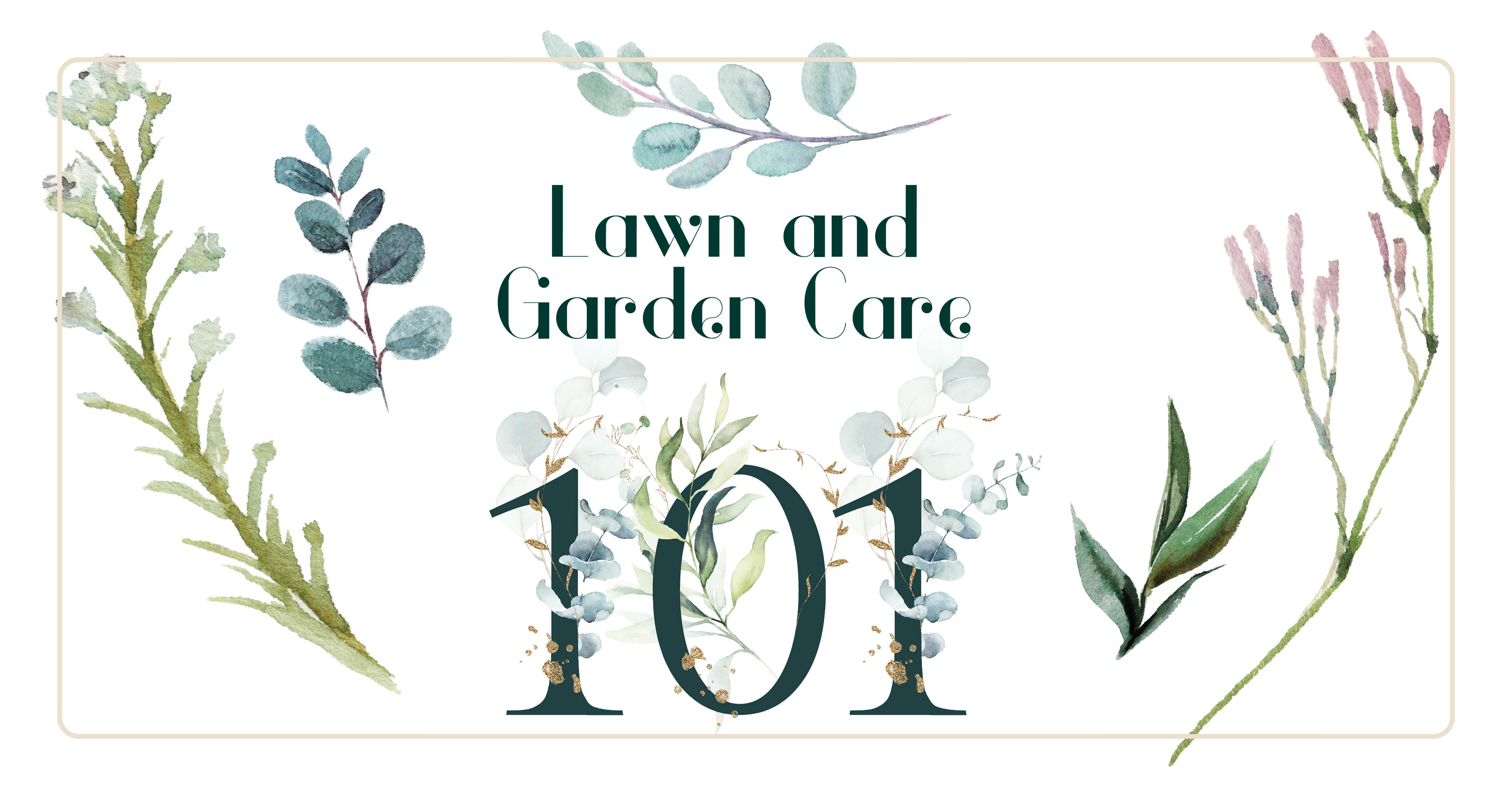By Maura Keller
For many homeowners, landscaping is as simple as putting in a tree here, a flowerbed there. For others, gardening and lawn care has evolved into a sophisticated process. Some homeowners are willing to invest as much time and money on the outside appearance of their homes as they dedicate to their home’s interior.
Whether you are hoping for a big harvest, a beautiful landscape or a lush lawn, knowing the “when” and “how” of gardening and lawn care on your property is paramount.
Spring Has Sprung
Northern Wisconsin gardeners face extreme cold and an even shorter growing season. Gardeners in the southern area of the state face unreliable snow cover and fluctuating winter temperatures. And all face untimely snowstorms, flooding and drought.
Melinda Myers, a Mukwonago-based gardening expert, author and TV/radio host with over 30 years of horticulture experience, says it’s vital that homeowners plan before planting. “You are less likely to overbuy and purchase the wrong plants if you start with a plan,” Myers says.
SPRING TO-DOS:
- Lightly rake the lawn as soon as snow recedes to avoid snow mold disease.
- Repair any lawn damage by tamping disrupted turf back in place or reseeding dead areas in May.
- Fertilize your lawn.
- Mow high (3-3.5”) and often (removing no more than one-third of the height) as soon as grass begins to grow. Leave the clippings on the lawn to decompose and improve the soil. And, keep clippings out of the lake.
- Monitor plantings for damage from winter weather and animals.
- Prune any broken branches, but wait to see how they recover as temperatures warm. Stressed plants and a cold spring can delay bud break. “Prune with a purpose—to control size, improve structure, flowering and fruiting,” Myers says.
- Clean leaves and debris out of plant beds. If leaves and debris are left too long they can prevent perennials from emerging and sometimes even kill them.
- Mulch and edge the lawn. According to Kyle Kohlmann, senior landscape architect at Seasonal Services, be careful not to apply too much mulch or else that could potentially smother plantings. “Edging plant beds could also be done at this time. The beds will be looking fresh and new right away in the growing season,” Kohlmann says.
- Examine perennial gardens for coral bells, bulbs and other perennials that may have frost heaved. The freezing and thawing that areas of Wisconsin have experienced cause soil to shift and can push plants out of the ground, so reset as needed.
“And if you let perennials stand for winter you can cut them down and compost the debris,” Myers says. “The longer you wait, the better for the beneficial insects that may be overwintering in the stems. I pile mine in an area out of sight until mid-summer to give any beneficial insects a chance to hatch.” - Check seed packets and plant tags for timing on planting. Wait until the soil warms and the danger of frost has passed to plant warm season plants like tomatoes, squash, melons, impatiens and coleus. “With the snowmelt, there is a lot of available nitrogen in the ground for spring green up,” says Craig Kittleson, owner of Kittleson Landscape. “I’m not a big advocate for a lot of fertilizer [during] spring time on lawns, and most of the plants and shrubs should not need any fertilizer at this time.”
Summer Splendor
Summer is the time of year to watch plants burst into vibrant blooms—often at different times. As Kittleson explains, for areas of your landscape that lack color, go to a nursery and find some perennials that are flowering at this time.
“There are plenty of perennials to choose from that will give you a stronger color in the late summer and fall when some of those shrubs are just looking green,” Kittleson says.
Also, be sure your lawn is fed throughout the whole growing season.
“Think of it as if you are eating a balanced meal all year long versus one really rich meal and then nothing after that,” Kittleson says. “If you dump a bunch of fertilizer [on your lawn] in the springtime and then do not do any more throughout the rest of the season, it will cause your grass to [be] stressed and be more likely [to encourage] disease in your lawn.”
SUMMER CHECKLIST:
- Lightly fertilize and water your lawn under drought conditions to help keep things looking green.
- Mow your lawn to a three-inch height to keep the ground cooler and conserve moisture for your grass.
- Weed gardens. Just like in spring, it’s important to suppress weed growth in summer. If weeds start to take hold in the garden they can overrun ornamental plantings. Kohlmann suggests using Preen in plant beds, which is a preemergent granule herbicide that kills weeds’ seeds.
- Mulch soil with shredded leaves, evergreen needles or other organic material to conserve moisture.
- Water established plants thoroughly when the top few inches of soil begin to dry, and check new plantings and keep soil moist until seedling and transplants are established.
- Check container plantings and water thoroughly as needed.
- Deadhead perennials. After perennials have flowered it’s a good idea to remove spent flowers. This keeps the plant looking healthy and clean. Sometimes it will spark a second round of flowering in some perennials.
Lakeside Garden and Lawn Care
For owners of lake homes, Myers says it is important to always keep the health of the lake in mind.
“Growing a healthy lawn and gardens can help keep water and any dust and pollutants on the property and out of the lake,” Myers says. “Do not discard pond plants in the lake, as non-native and invasive plants damage our water quality. And avoid harmful chemicals that may end up in the lake.”
Fall Preparation
When the growing season winds down, there are some key tasks that will help protect your lawn and garden during the cold months.
AUTUMN TASK LIST:
- Leave perennials to stand for the winter.
- Plant spring flowering bulbs after temperatures are consistently in the 40s to low 50s.
- Plant perennials, trees, shrubs and grass seed.
- Continue mowing high and often as long as the grass is growing.
- Fall fertilization of lawn is the most effective at encouraging a thick lush lawn. “Fertilize on Labor Day and Halloween with a low-nitrogen, slow-release fertilizer like Milorganite,” Myers says.
- Shred leaves with your mower and leave them on the lawn to add organic matter and nutrients, or use as mulch or compost.
- Place winter protection and animal barriers in place as needed before the ground freezes.
- Protect sensitive plantings from critters. Wrap tender evergreens with burlap for further protection.
What to do in Winter
To keep up your lawn and garden maintenance, even cold-weather tasks will help preserve your hard work.
WINTER WRAP-UP ITEMS:
- Apply evergreen boughs over sensitive perennials and bulbs after the ground freezes to reduce the risk of frost heaving.
- Monitor your landscape for animal damage and adjust management strategies as needed.
- Winter is a great time to do structural pruning on trees and shrubs because the branching structure is visible (there are no leaves on the trees). “Be sure not to prune early spring flowering trees/shrubs in winter [like] lilacs, magnolias, forsythia, et cetera,” Kohlmann says. “This would remove flower buds and prevent the plant from blossoming.”
Top Tools
PRUNING SHEARS AND LOPPERS
Buy a high-quality pruner with sharpened blades and well-balanced grips. Loppers are essentially long-handled pruning shears that are used for trimming shrubs and trees.
SHOVEL OR SPADE
If you do a lot of planting, buy a high- quality, curved digging shovel or straight- edge spade.
BULB AUGER
If you plant a lot of annuals, perennials and flower bulbs, a bulb auger—or earth auger, as they’re sometimes called—will become your best friend. Attach the auger to your hand-held drill and you’re ready to dig hundreds of holes in a short amount of time.





